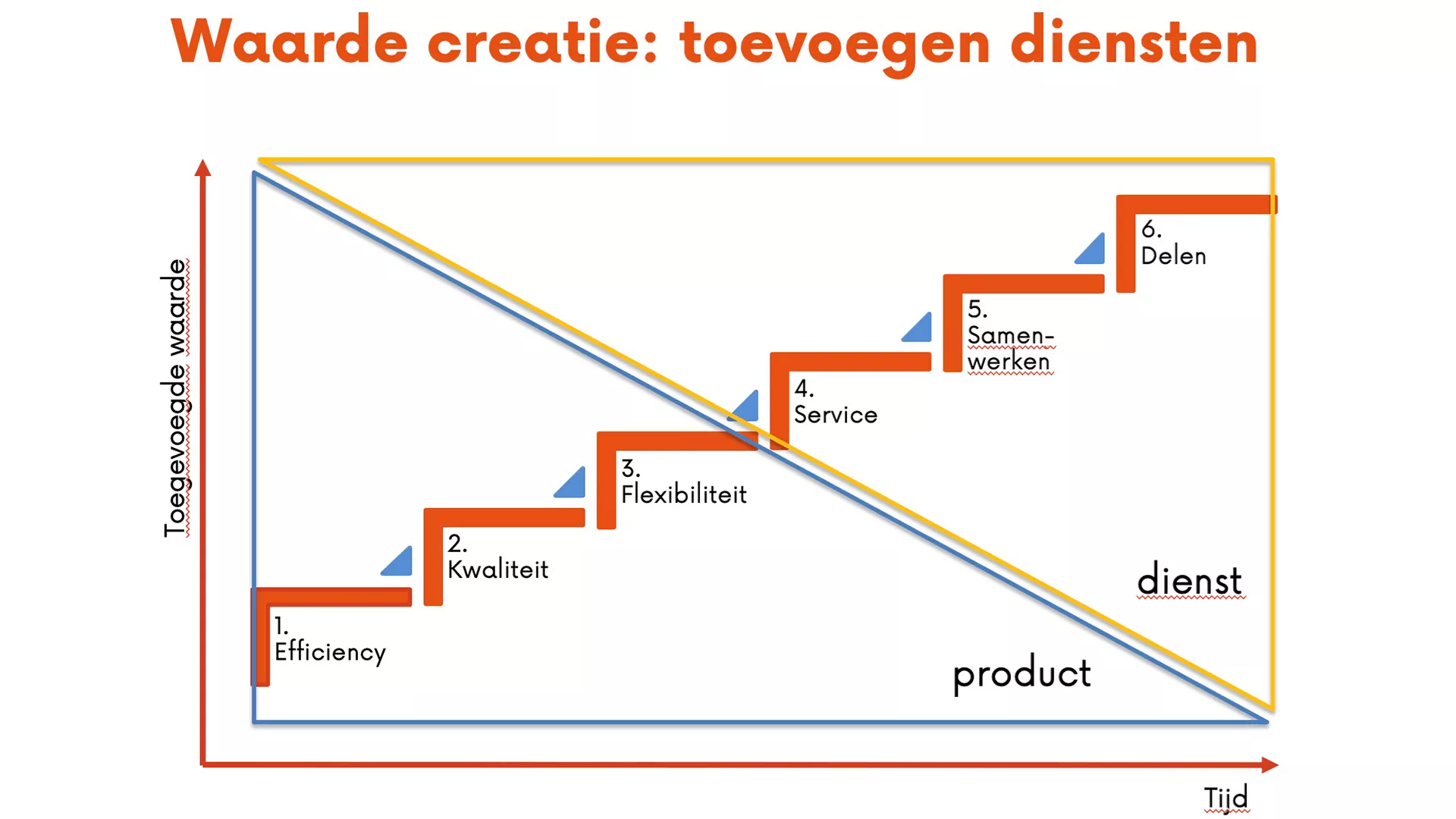Servitization in practice
Does this sound familiar? You see ways of setting yourself apart from the competition by adding more service to your product. That is technically possible, but is it what customers want? And what are the consequences for the internal organization? It looks good from a marketing and sales point of view, but often proves more difficult in practice. Servitization is only successful when customers’ expectations, the competences within the internal organisation and processes, technical application and the revenue model are aligned.
Value creation
Recent research by ABN AMRO shows that companies in the Dutch industry that changed their revenue model by adding extra services were able to maintain or improve the profit margin in 2018. This is in contrast to companies that did not change their revenue model.
This addition of extra services to your product is called Servitization. These extra services create value not only for the customer but also for your own organisation. They are intended to set you apart from the competition. When you contemplate the composition of het proposition more consciously, you often make it possible to actively implement corporate social responsibility
Servitization is mistakenly often used to refer to the most extreme forms only. The end goal is offering the product as a service (PaaS). Such as Signify selling light at Schiphol instead of lamps, for instance.
Technical companies often speak of digitization rather than Servitization. Production and R&D departments, in particular, often refer to digitization. Their reasoning is based on technical complexity. Marketing and Sales, on the other hand, are more likely to refer to Servitization if the subject is the same. They are more interested in how digitization can enhance their customer´s result, which in turn would boost their own relevance as a supplier.
Examples of Servitization
The provision of additional services is not limited to tech companies. It is also possible to add supplementary services to services and commodities. These services relate to cooperation and the relationship with the customer.
There are many examples of Servitization:
• a maintenance contract with the machine supplied;
• packing your product in such a way that the customer processes it easily;
• providing support to improve your customer's market opportunities;
• fulfilling the role of trusted advisor rather than just a knowledge provider;
• remote reading of machine performance and provision of process optimization proposals;
• developing a blockchain platform to improve traceability and thus enhance retailer and consumer confidence in the supply chain.
Step by step
Different forms of servitization create value for customers at different levels. The services are defined differently at each level.
Over the years, the automotive industry has defined these steps as follows:
• Efficiency: Henry Ford introduced the conveyor belt to reduce costs;
• Quality: what good is a cheap car if the technology is inadequate;
• Flexibility: options emerged (a colour other than black);
• Service: maintenance schedules and contracts emerged;
• Collaboration: flexible lease contracts when an employee leaves employment;
• Sharing: share concepts for cars, pay-as-you-go, mobility.
Steps 1 to 3 are mainly about the product and the production process. Much attention is paid to lean manufacturing and the internal organization is very task and content focused and is contemplating standardizing processes. At step 3 or 4, many companies will be contemplating the next step.
From step 4 onwards, the focus is on the result that your customer can achieve with your product. This is where extra services are added, which we refer to as servitization. These are mostly customer-specific services, requiring more flexibility from the organisation. Adding services has direct consequences for employees because providing a service, by definition, always involves a human element. It requires other social skills. The relationship with the customer, staff behaviour, and customer confidence have a different significance.
The Servitization Journey
From step 4, the emphasis changes. Employee commitment is crucial to this shifting of emphasis. It is important to manage the change process well and requires the right style of leadership. You don't want to change people but let them experience, step by step, how things can be done differently. The Expectations Monitor is an excellent tool for this.
Each next step can be taken as and when the organization is ready. You cannot move on from stage 3 to stage 4 until you have mastered the basic procedures in stages 1 to 3. And you can only move on from stage 4 to stage 5 once you have completely mastered step 4. Starting at the final stage because it is technically possible is the biggest pitfall in this journey, because the internal organization will not have been through the previous stages so is not ready yet.
In order to be successful at every stage of Servitization, the following must always be coordinated:
• Mastering the applied technology;
• Proposition must correspond with customer expectations;
• Appropriate competences and behaviour of the internal organization;
• Appropriate revenue model.
The alternative
Some companies nevertheless fail to see the need for this, preferring to stay at stage 3, which they do well. However, these companies will have to realise that other companies may fill this gap. They will develop services around the existing product without wanting to sell the product itself. Examples include process optimization services, because it is possible to read and analyse data. The advantage for these companies is that they do not have to embark on a servitization journey. The do not have to complete stages 4 and beyond. And because they provide a service which is important to the customer, there is a chance that they will become more important than the supplier of the actual machine.
We would be happy to discuss with you what Servitization could do for your organization. We would be only too pleased to make an appointment without obligation to explore how we could help you implement the next stages.



